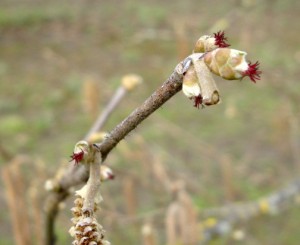Skunks don’t play fair!
We know all about skunks. This time of year they form a convoy that snakes through the orchard scratching out worms and bugs. I actually think they are pretty cute: Mamma with all her babies, tails held high, nose to tail as they wobble along.
Skunks do dig, sometimes extensively, in the orchards. The most annoying problem they cause for us is as playmates for the dogs. They just don’t play fair. We have tried all kinds of recipes for getting the stink off the dogs (or kids for that matter!). We finally stumbled across one that actually works fabulously. I am sorry we did not note the person responsible for supplying this extraordinary suggestion, but we would like to pass it on.
Skunk Stink Remover Recipe
- 2 cups of Peroxide
- 1/4 cup baking soda
- Dawn dish soap
- Hose
Get out your hose, put on your rain gear (depending on how big your dog is….) and get a plastic pitcher.
Pour the peroxide into the pitcher. Add about a teaspoon of Dawn and swirl it around. Get your dog ready before you put in the baking soda. When everything is ready – mix in the baking soda (it will foam with the chemical reaction) and immediately pour the mixture over the dog. Scrub it like shampooing, making sure you get all the potential skunk areas. The Dawn will burn their eyes and the peroxide will make them drool, but it gets out the skunk better than anything we have ever tried. Hose them off completely and stand back.
Every drop of skunk stink will be gone. Believe me, we have a new, young mastiff, and she has gotten hit 4 times so far this summer. She is getting smarter. At least no more direct hits! I don’t know if she is figuring out that skunks stink, or if she really hates these cold baths!




